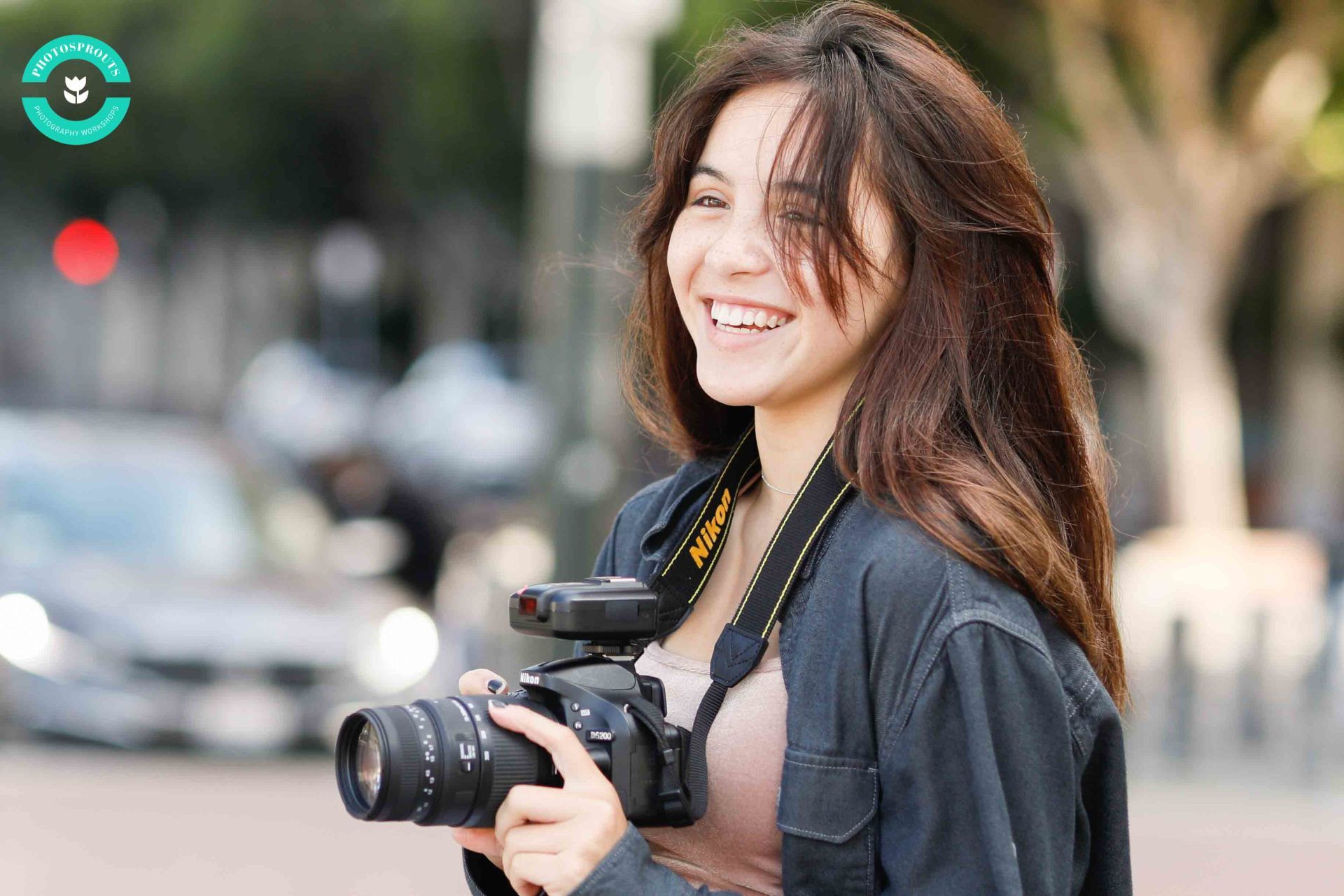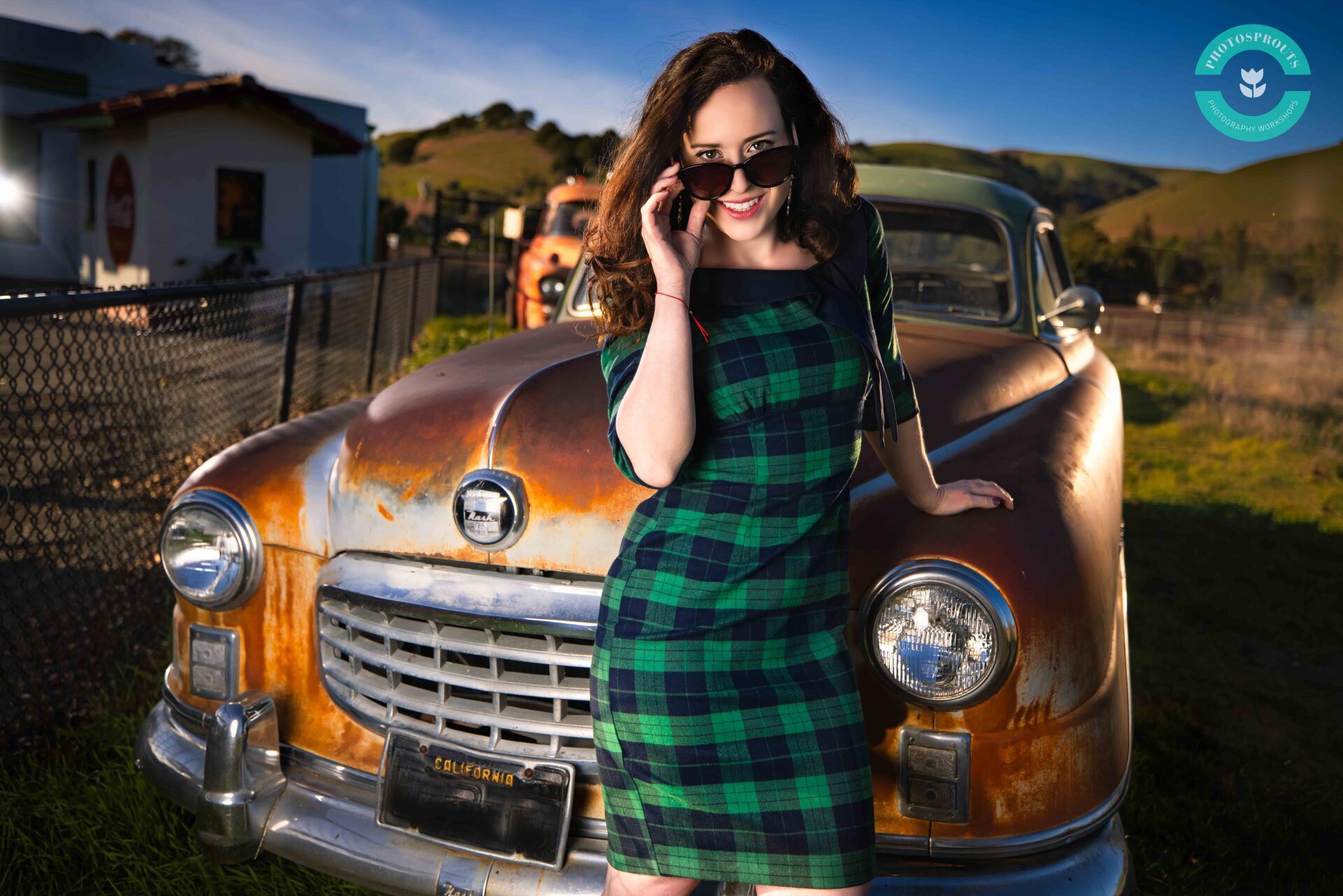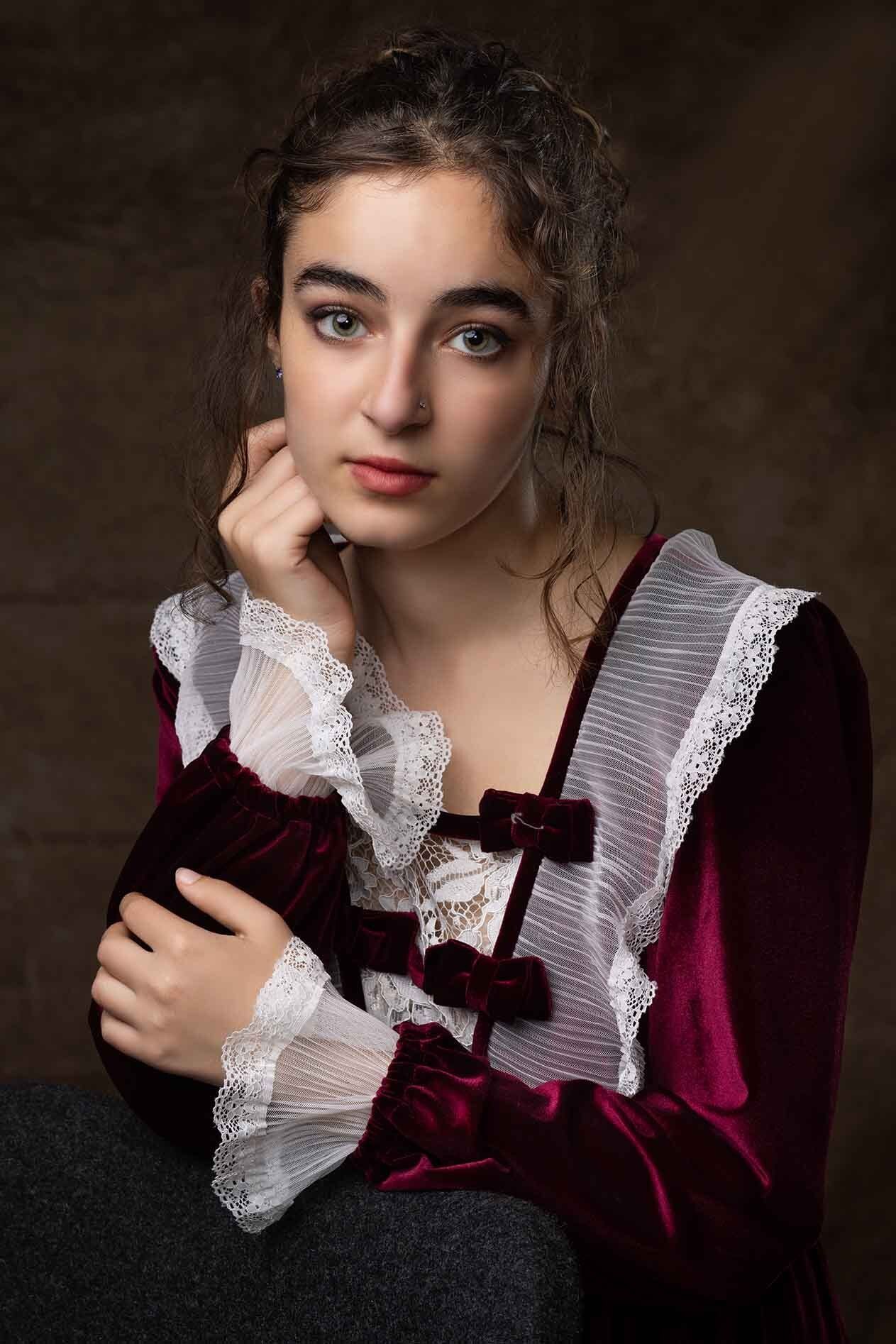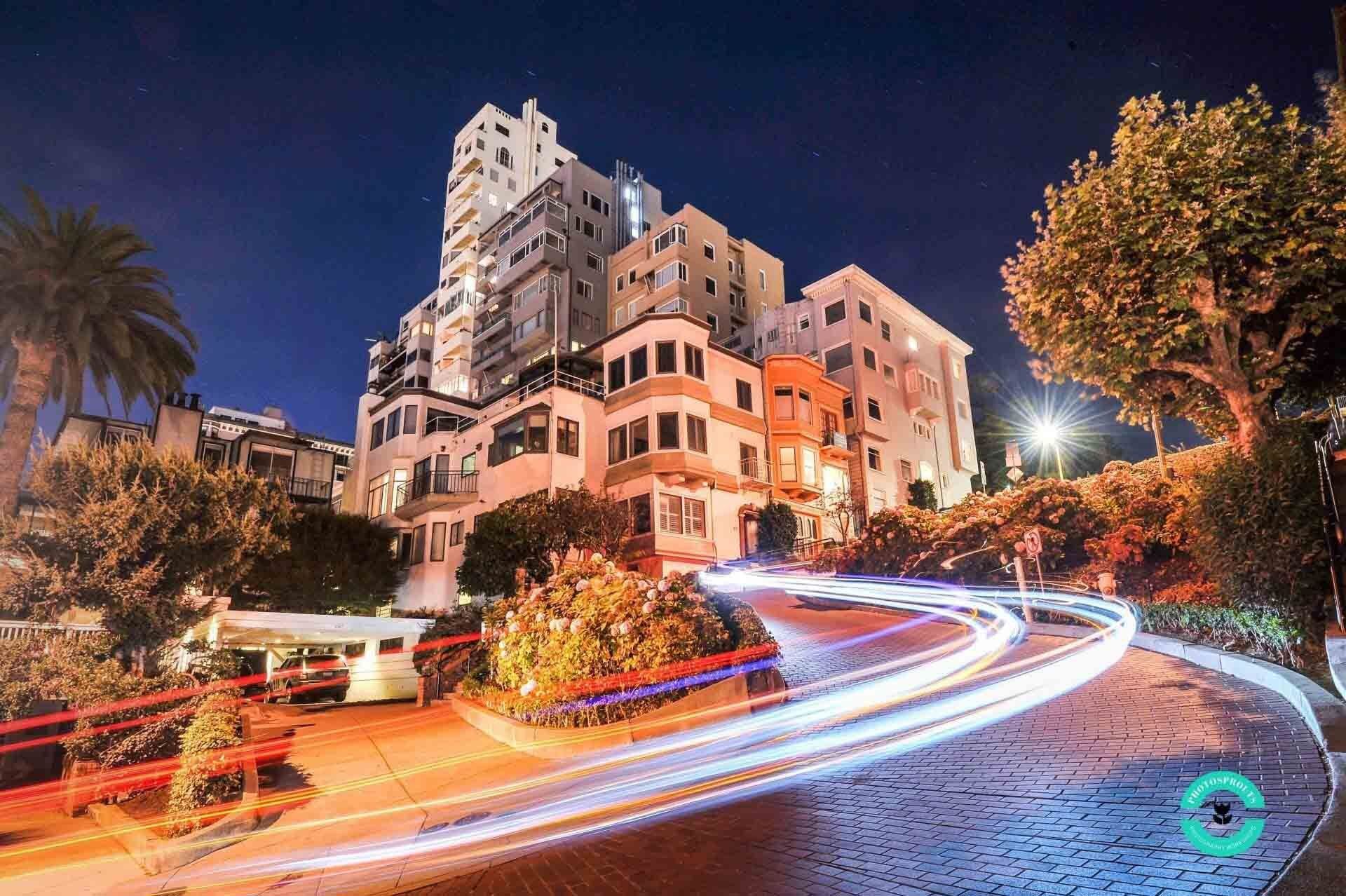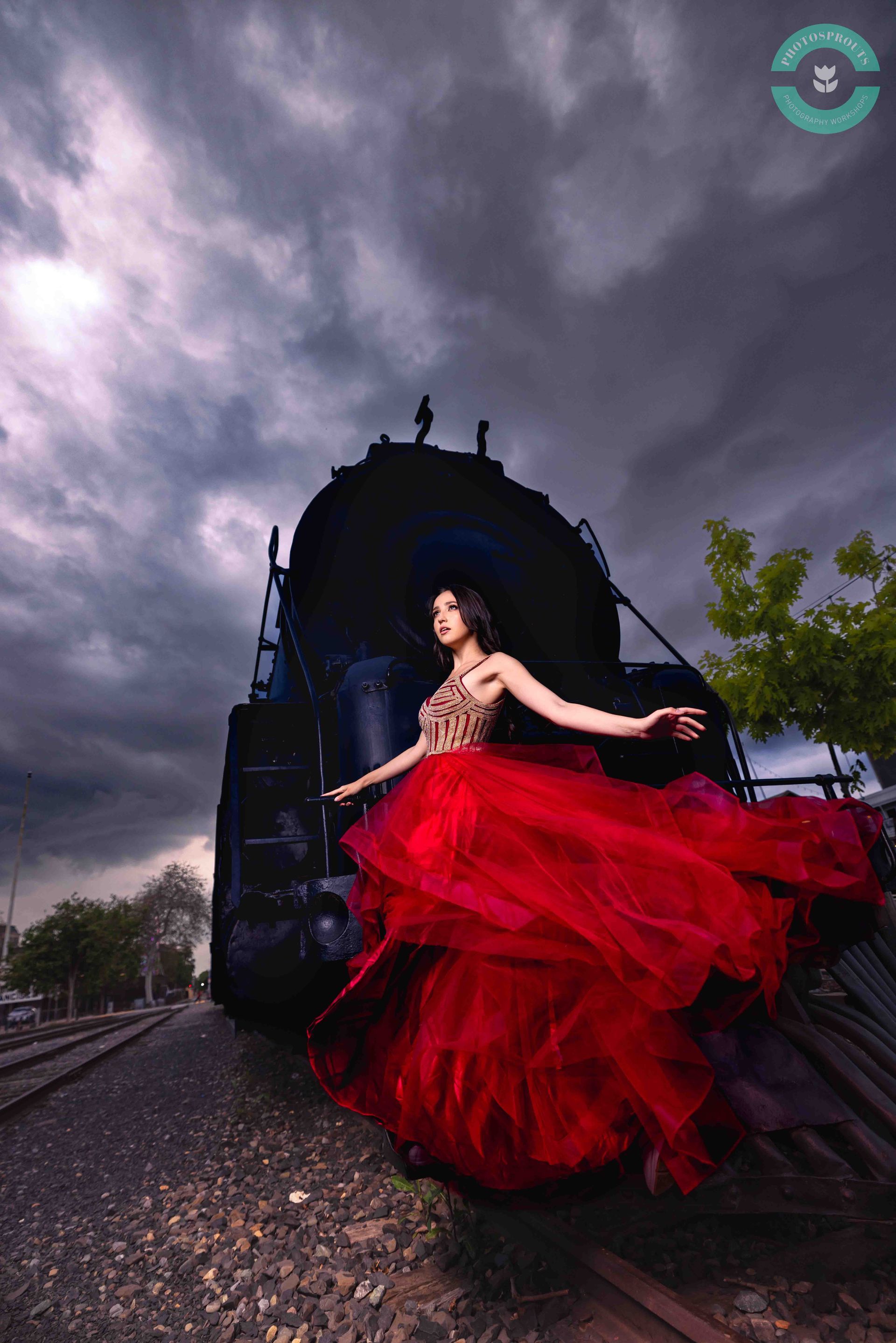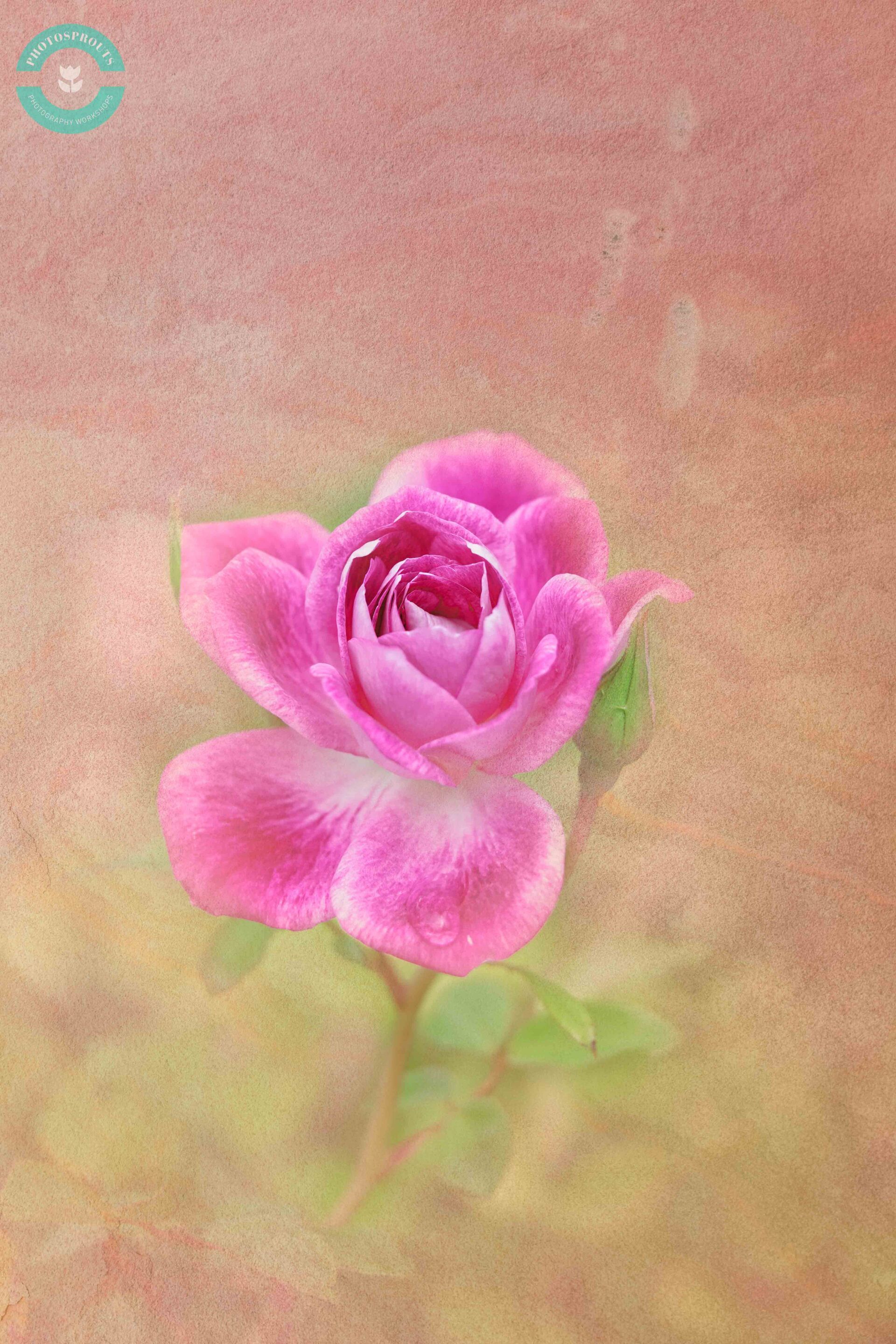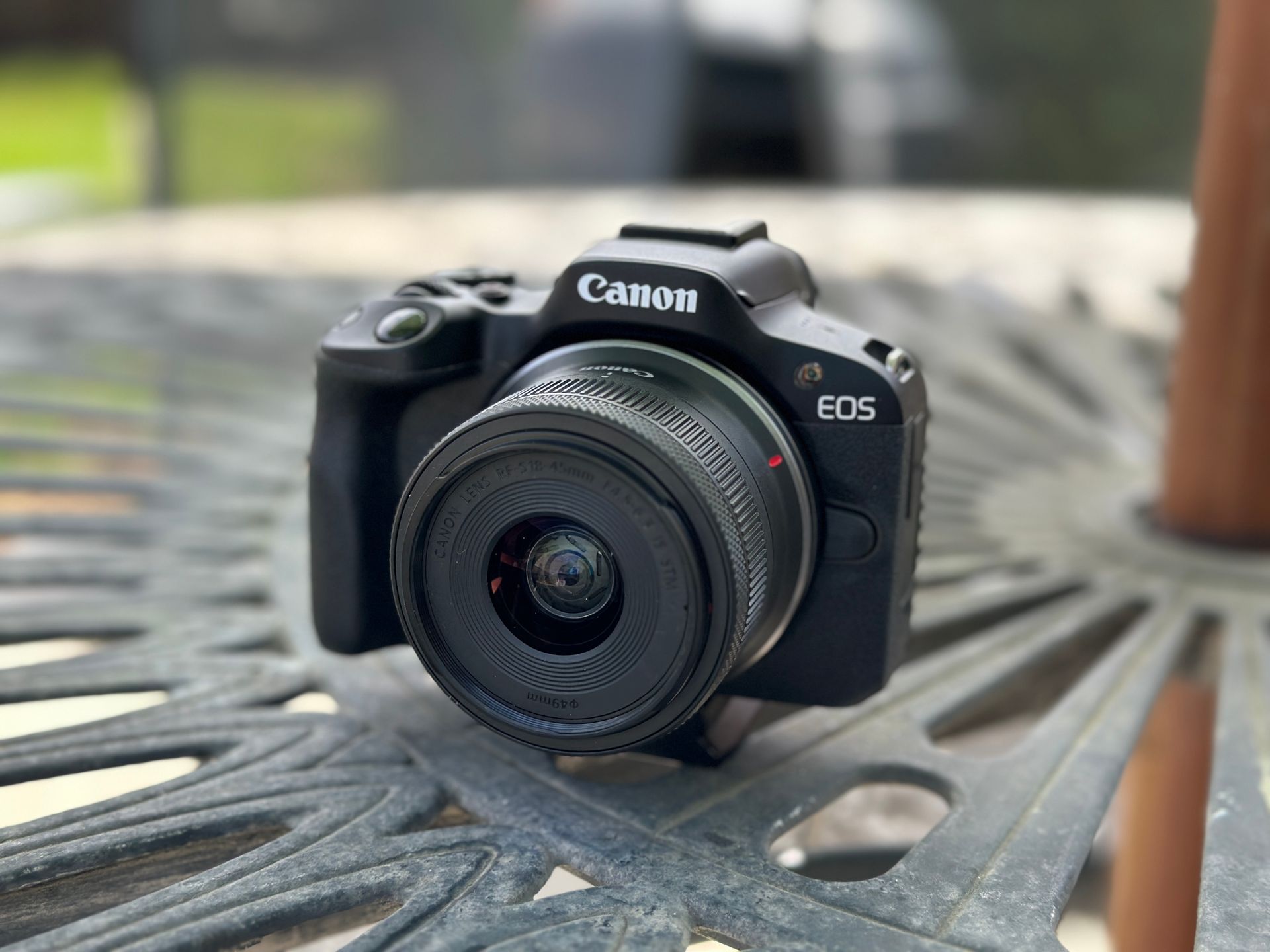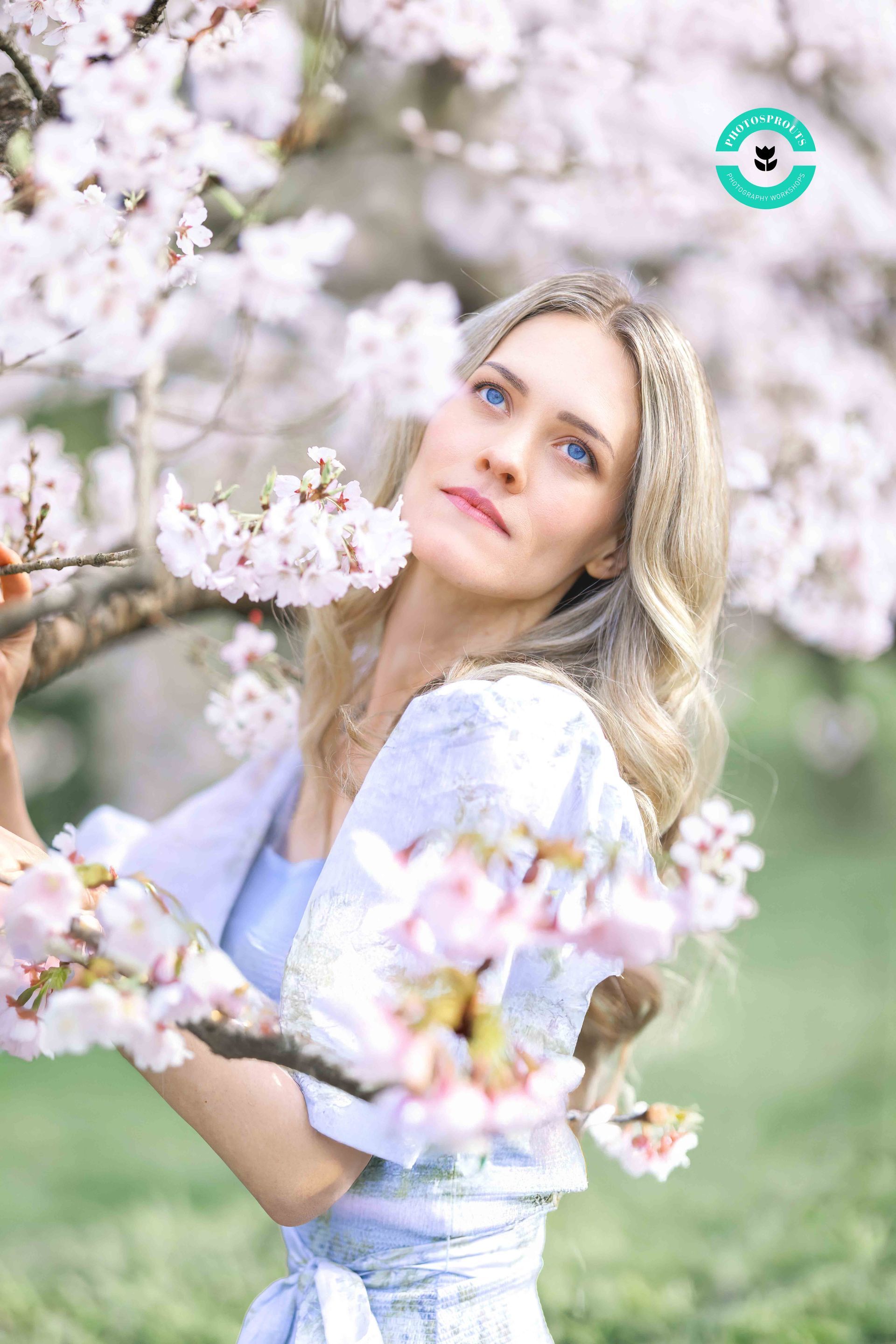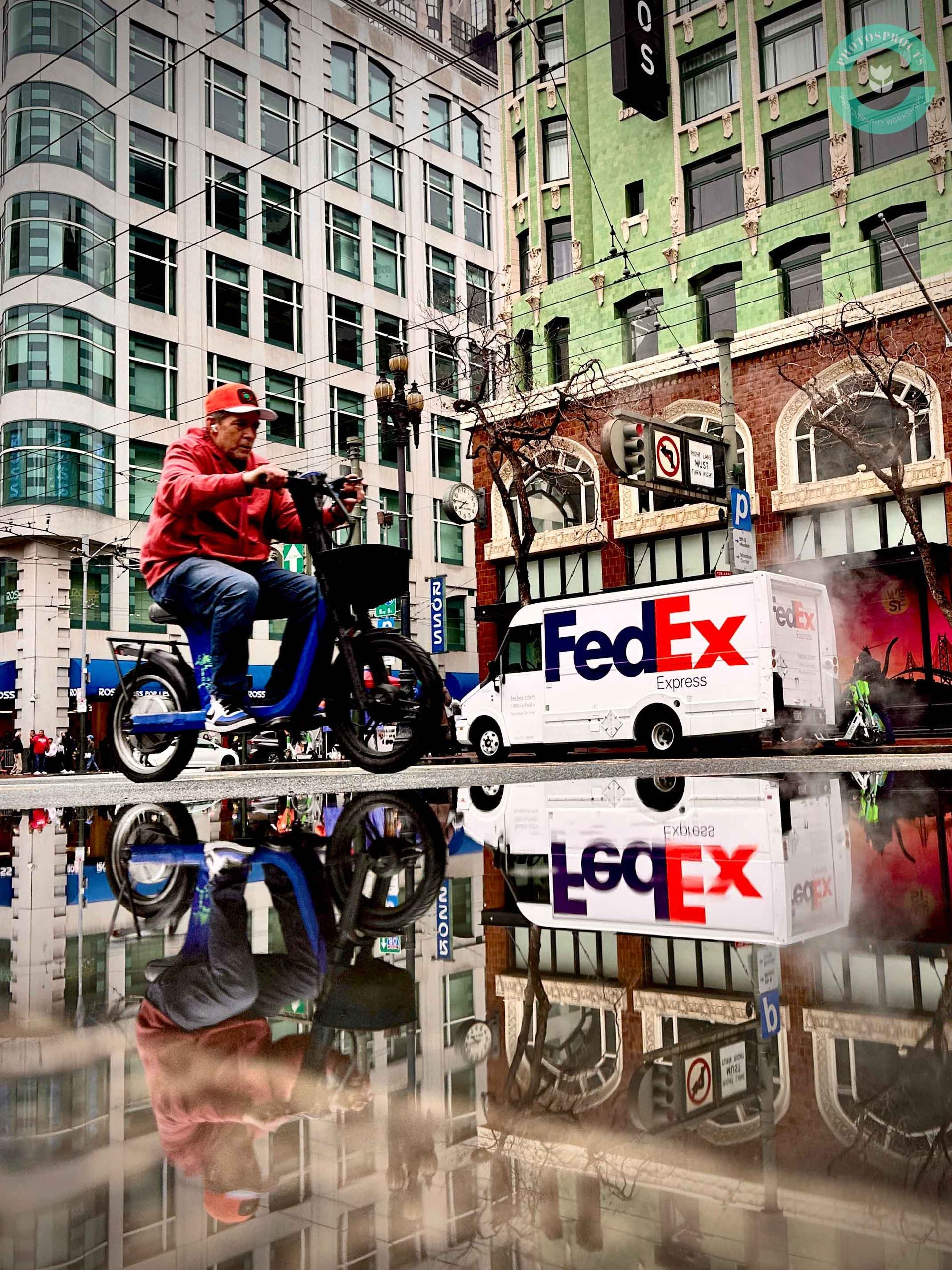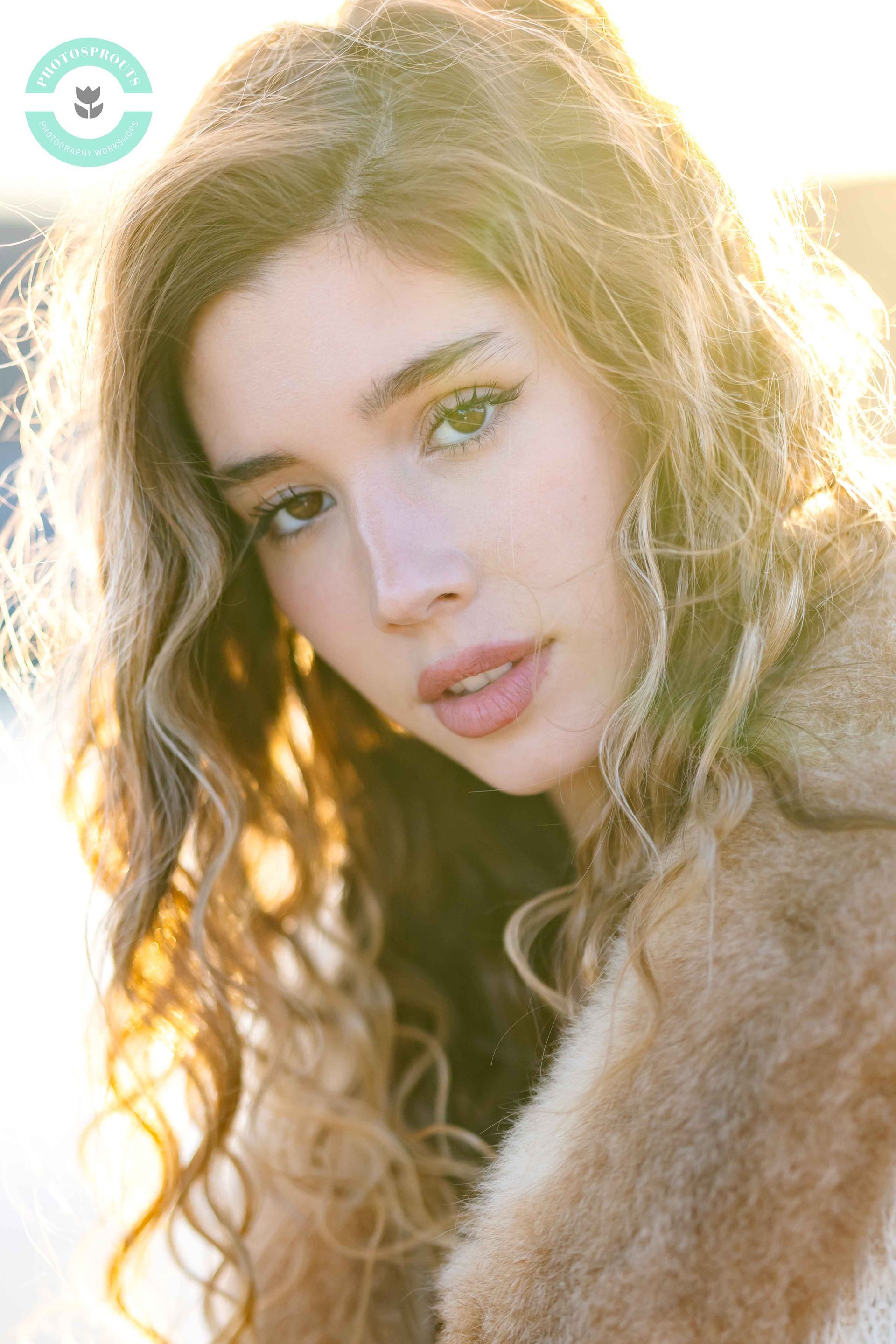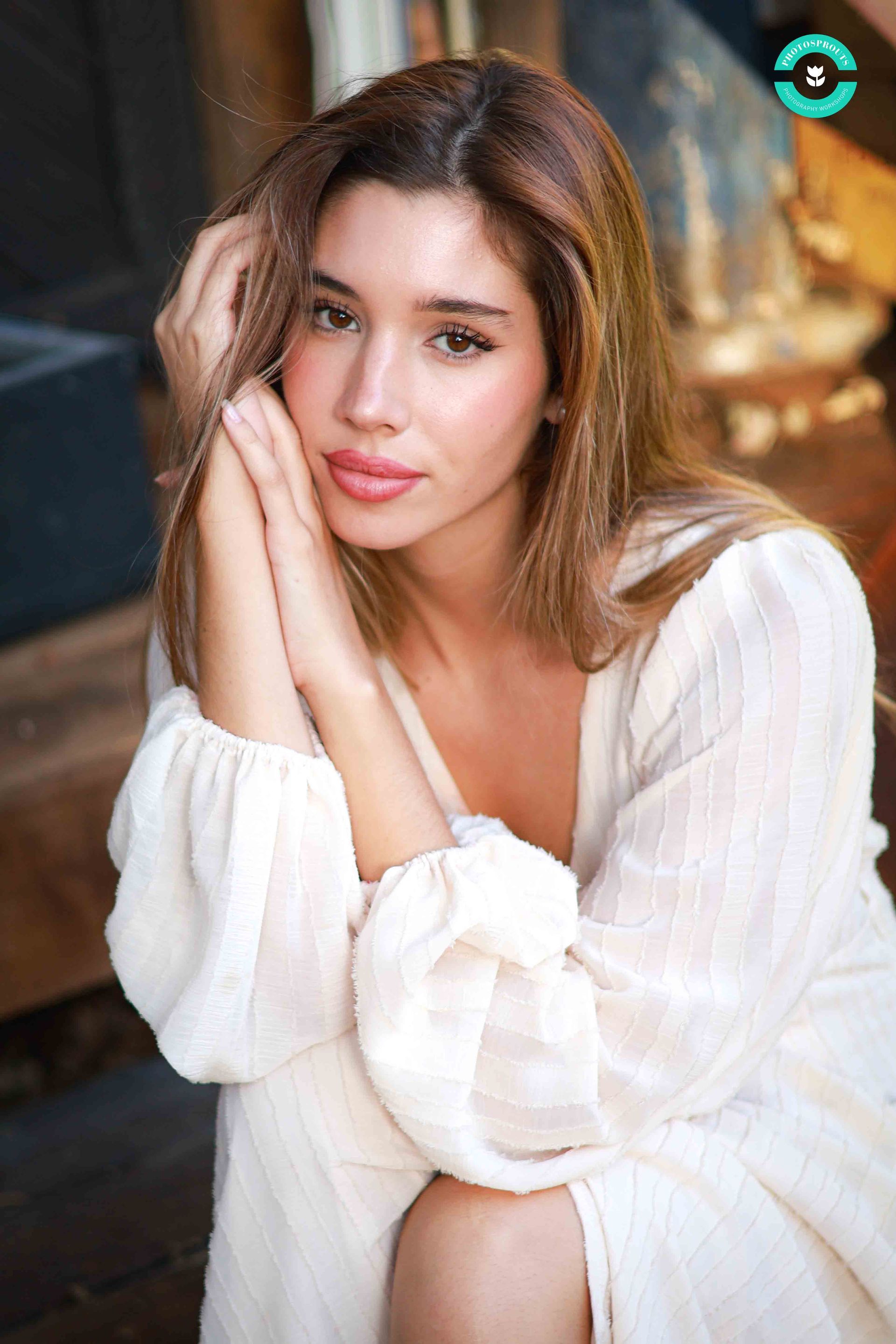5 Expert Tips for Picture-Perfect Holiday Family Photos
5 Expert Tips for Picture-Perfect Holiday Family Photos

Canon EOS R5 + RF 70-200 F2.8
The holiday season is the perfect time to capture lasting memories with your loved ones, but getting that perfect family photo for your holiday cards can be a challenge. From finding the right light to picking the best outfits, there are a few key elements that can make all the difference. In this blog, I’ll share five essential tips to help you capture holiday-card worthy family photos that you'll be proud to share!
Tip #1
Find an open shade
What is an open shade? An open shade is an area that is shaded but still has access to plenty of soft natural light. It’s typically found outdoors in places where direct sunlight is blocked (by buildings, trees, or other objects), but the surroundings are still illuminated by light bouncing around.
Shooting in open shade is ideal for portraits because it provides soft, even lighting without harsh shadows or overexposure, making it easier to capture flattering photos. Unlike direct sunlight, which can cause squinting and unflattering shadows, open shade offers gentle light that helps maintain natural skin tones and detail.
To achieve soft, flattering light for your family photos, finding an open shade is key. Shooting early in the morning or late in the afternoon is ideal because the light is softer, creating a larger, even coverage that shields both your subjects and the background from harsh shadows or overexposure, resulting in consistent exposure throughout the frame.
Open shade allows for a natural, balanced look while keeping the skin tones true to life. A well-shaded location, such as under trees, near buildings, or in a garden, also ensures everyone looks comfortable and avoids squinting due to bright sunlight.
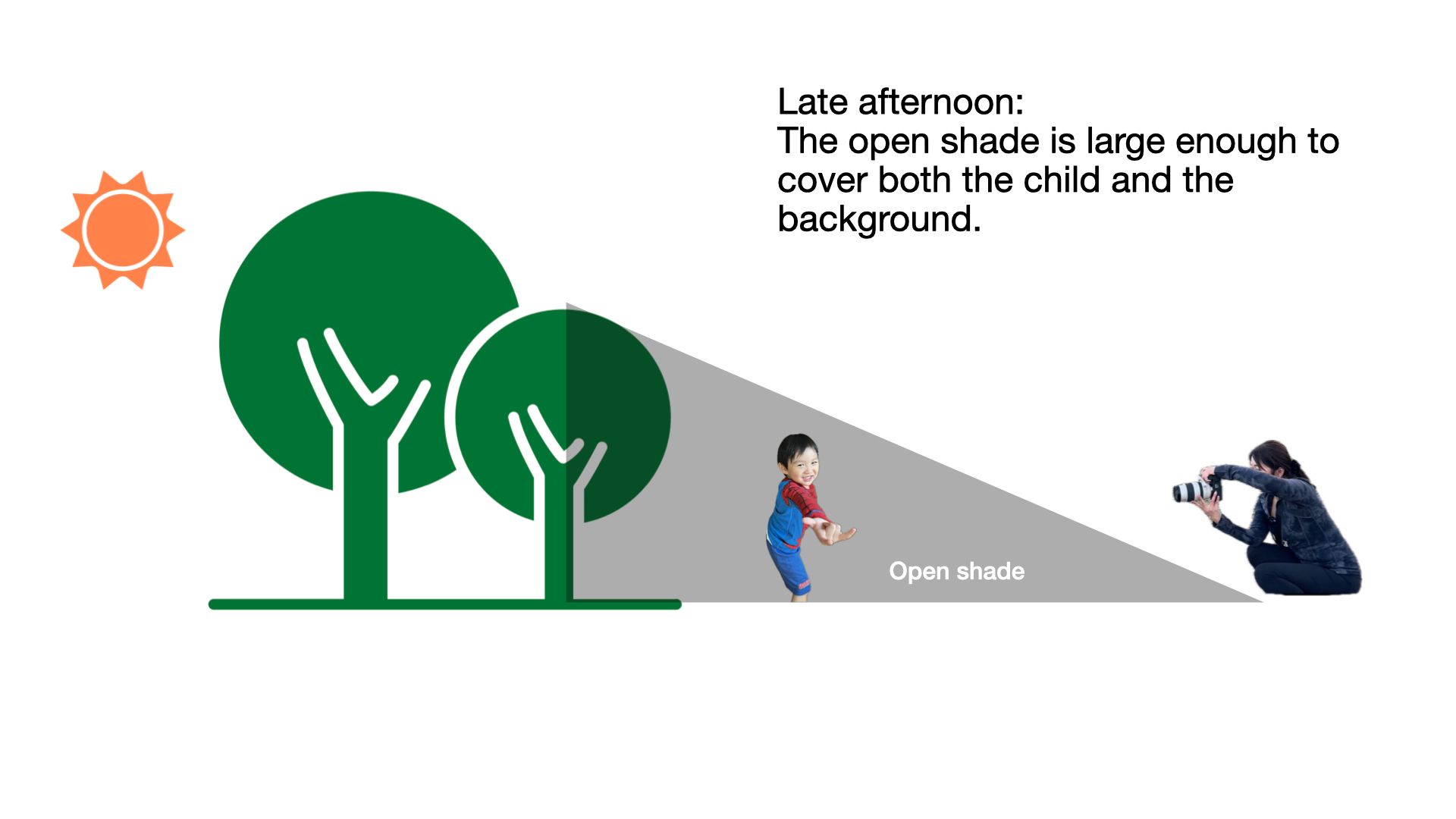
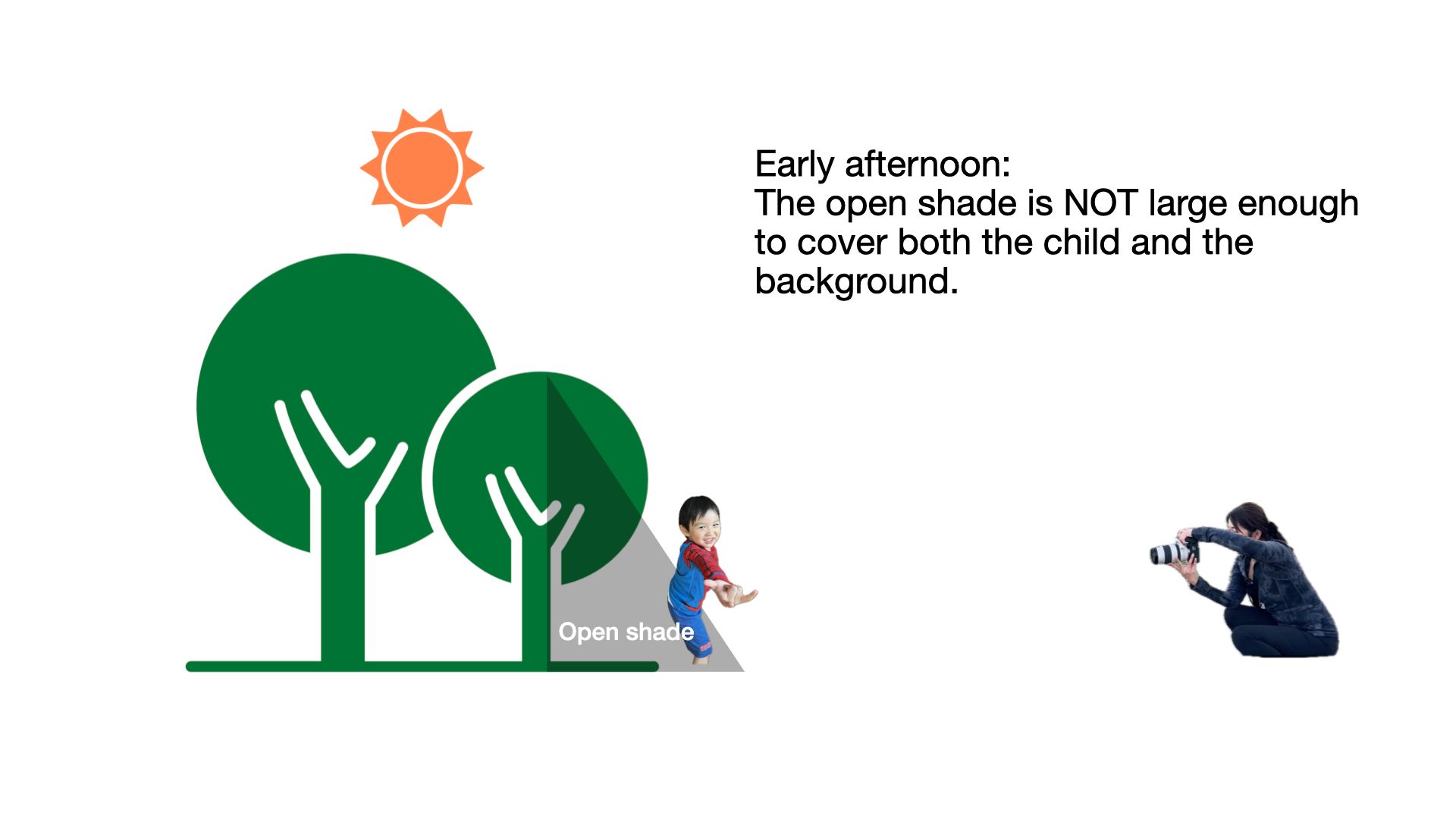

Canon EOS R5 + RF 70-200 F2.8
Shot in late afternoon, and in large open shades.
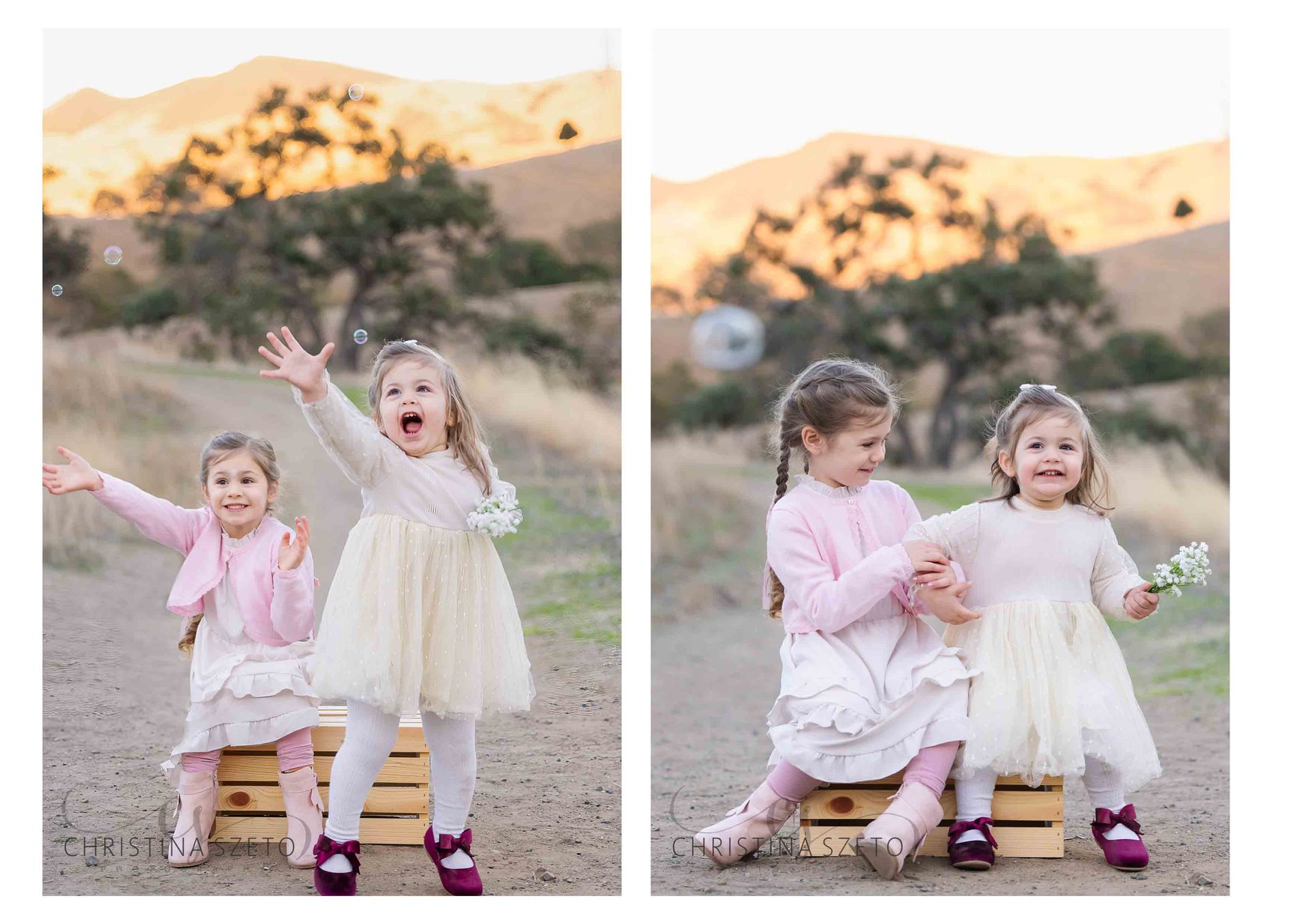
Canon EOS R5 + RF 70-200 F2.8
Shot in late afternoon, and in large open shades.
Tip #2
Coordinate the outfits
When planning outfits, color coordination goes a long way in making your family photos feel cohesive and visually pleasing. Instead of everyone wearing the same thing, opt for a color palette that complements each other—think shades of blues, earthy tones, or soft neutrals. Avoid neon colors, as they can reflect harsh tones onto the skin, and steer clear of overly matching outfits to avoid a dated look. The goal is to let each person’s personality shine while still maintaining a harmonious overall style that will look timeless on your holiday cards.
Here're more tips:
1) Choose a Color Palette: Start by picking a color scheme with 2-3 complementary colors. Think soft neutrals, pastels, or earthy tones that work well together. You want a harmonious look without being overly "matchy." Avoid having everyone wear the exact same color.
2) Add Layers and Textures: Mixing textures, like knits, denim, or lace, can add depth and visual interest to your photos. Scarves, cardigans, or vests are great for layering and can tie different outfits together while keeping things varied.
3) Coordinate, Don’t Match: Instead of everyone wearing the same outfit, aim for coordination. For example, one person could wear a patterned shirt with the chosen colors, while others wear solid pieces that match the color scheme. This allows individuality to shine through while still maintaining a unified look.
4) Consider the Setting: Factor in the location of your shoot. If you’re in a natural setting like a park or beach, earthy tones, blues, and whites work well. For urban settings, deeper or more dramatic colors can create a striking contrast with the background.
5) Avoid Busy Patterns and Neon Colors: Stick to solids or subtle patterns. Busy prints or neon colors can be distracting and take the focus away from the faces and emotions in the photo.
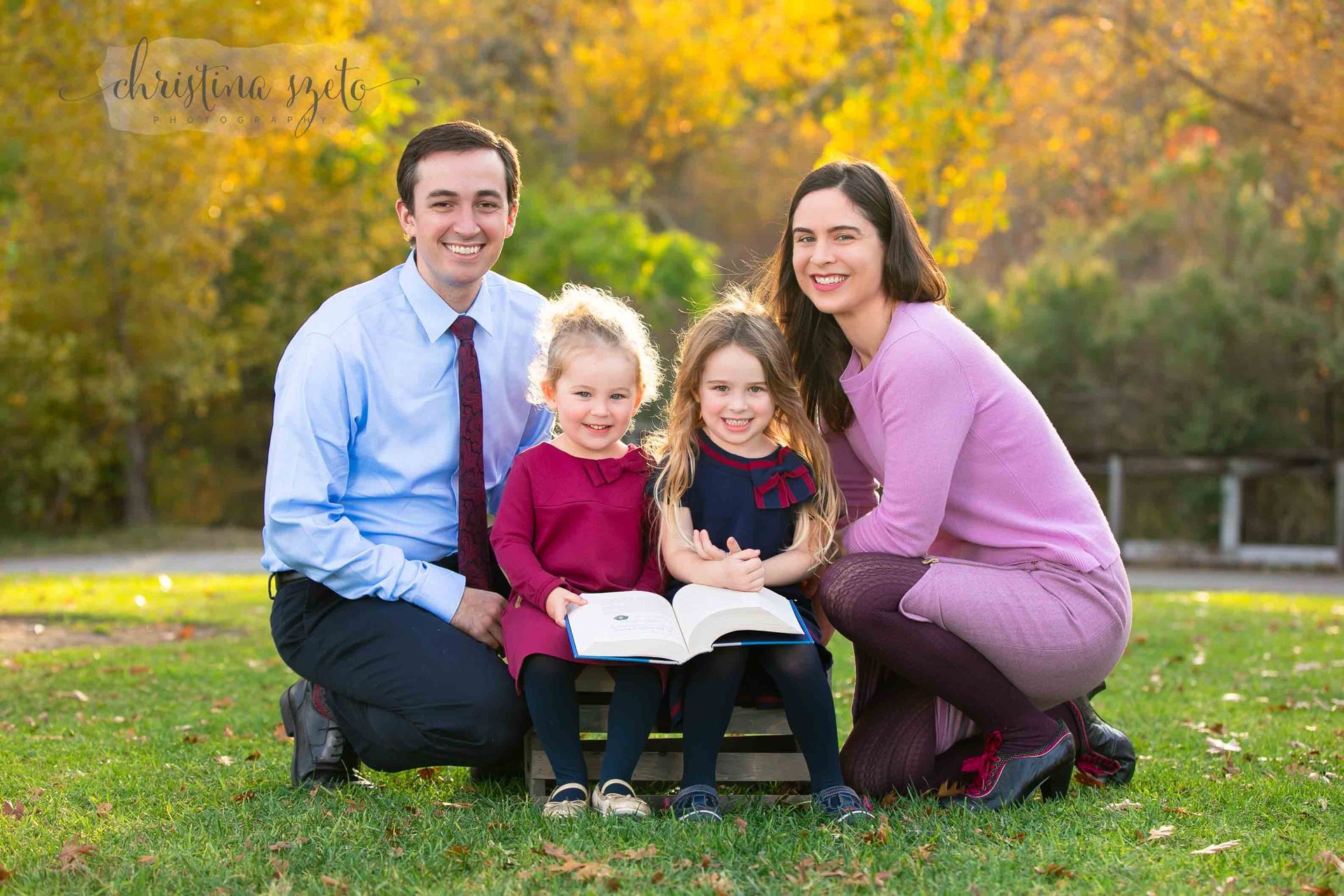
Canon 5D Mark 4 + EF 70-200 F2.8
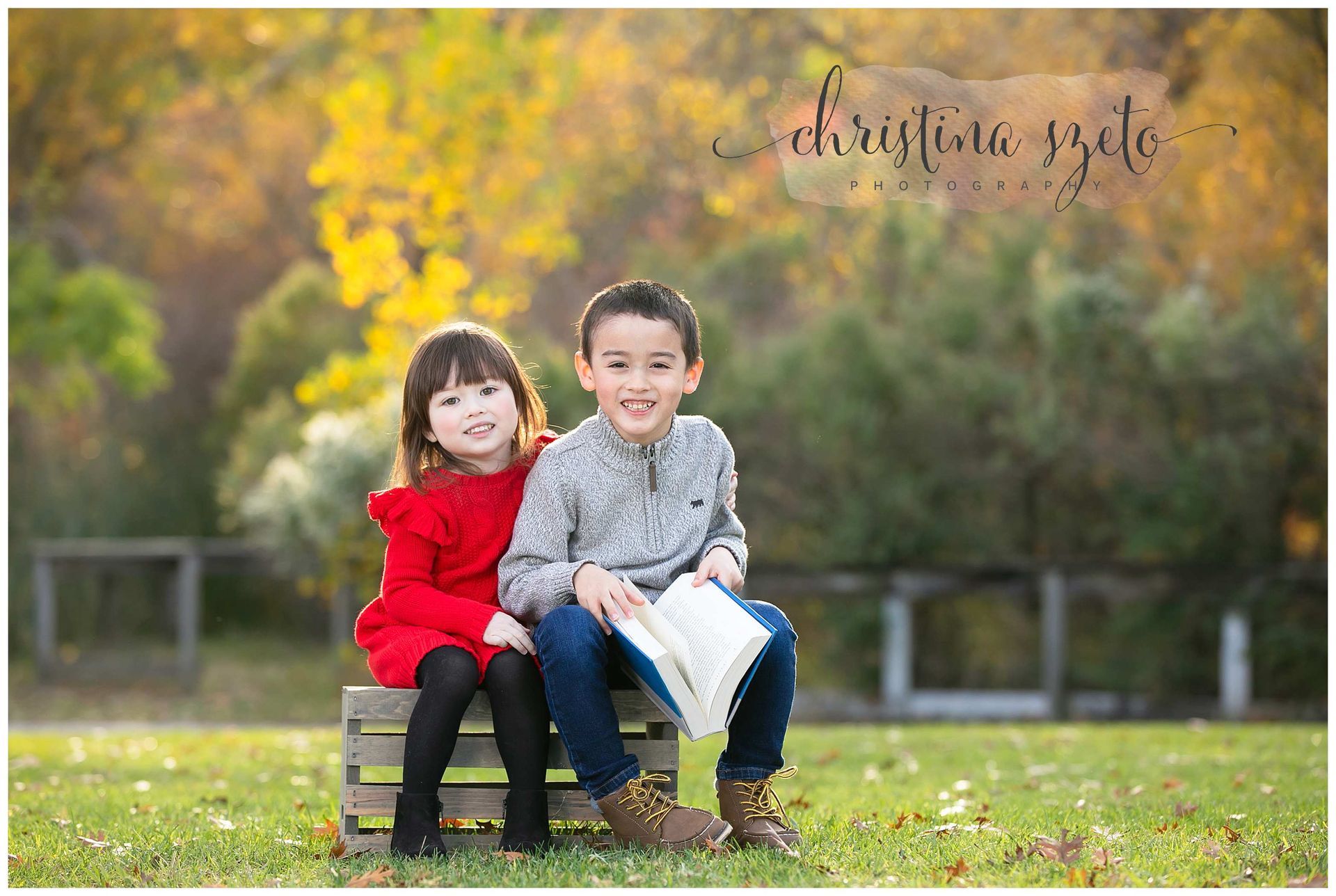
Canon 5D Mark 4 + EF 70-200 F2.8
Tip #3
Posing
A common misconception is that family photos are completely spontaneous and don't require any posing.
This is not true.
While candid shots can feel spontaneous, the best results often start with proper posing. Guide your subjects into a comfortable and connected stance, ensuring that there are no awkward gaps between them.
Encourage them to close the spaces between their bodies, perhaps by linking arms or holding hands, which naturally creates a feeling of closeness and warmth. To keep everyone sharp and in focus, make sure all faces are on the same focal plane. This allows you to use a wider aperture, resulting in beautiful background blur without compromising the clarity of the subjects’ faces.
Proper posing sets a strong foundation, making the candid moments that follow feel more natural. In my private coaching program, "The Professional Family Photography Academy", I'll help you generate endless posing ideas by mastering just four base poses, ensuring you never run out of inspiration during your sessions. You will be able to nail high-end clients who are willing to invest in your talents and service, there will be no more anxiety before and frustrations after the session.
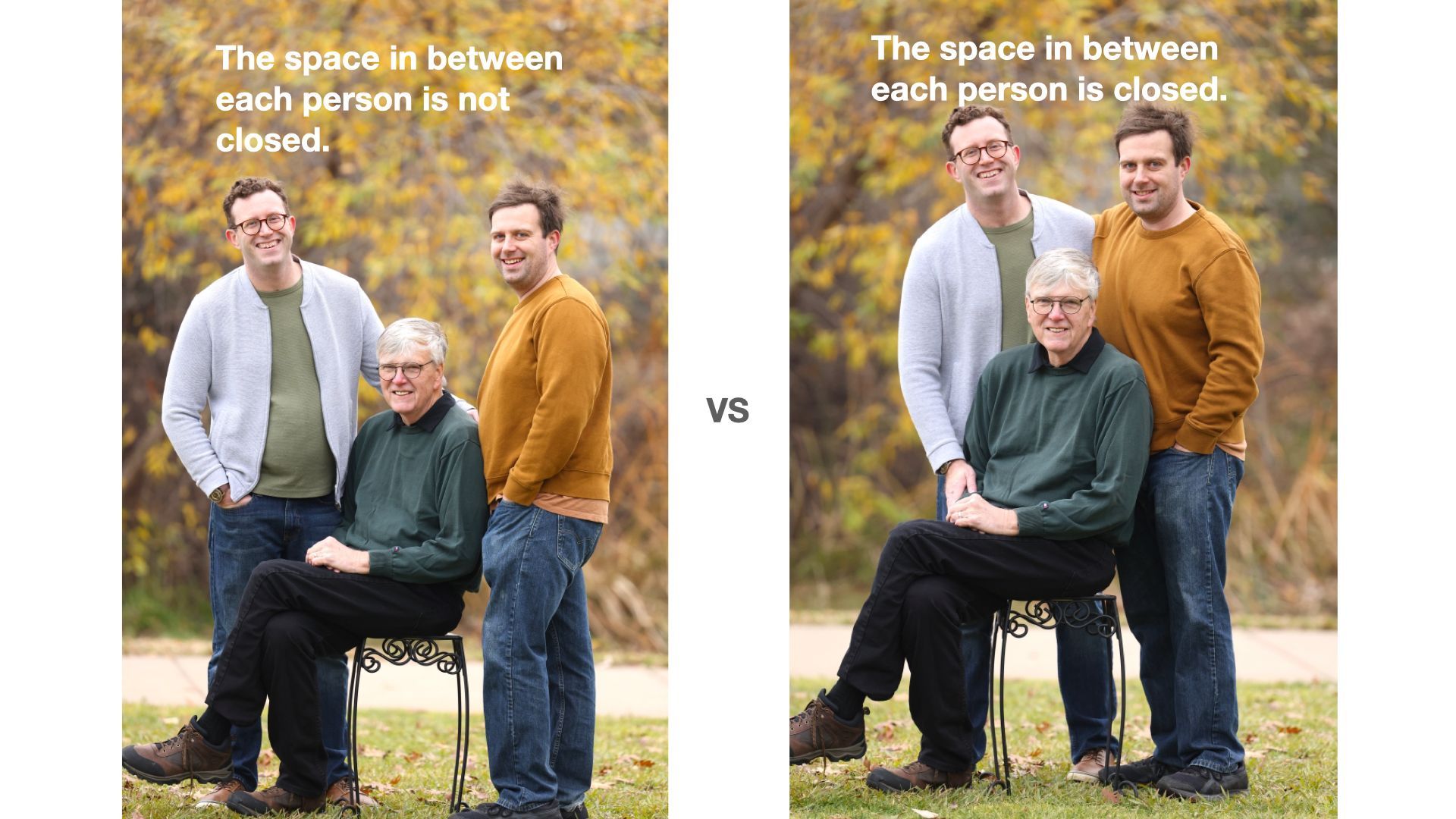

Canon EOS R5 + RF 85mm F1.2
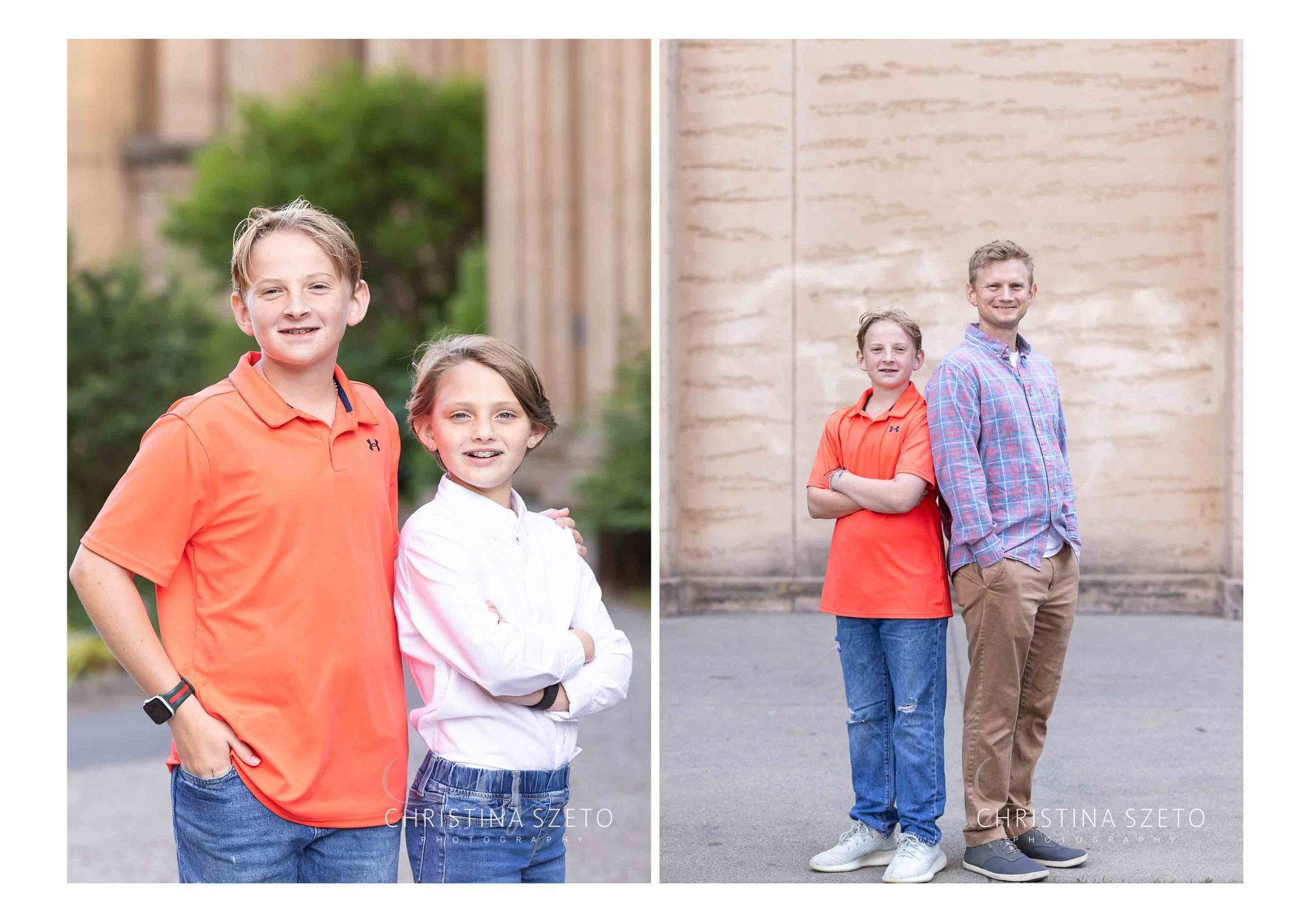
Canon EOS R5 + RF 85mm F1.2
Tip #4
Candid shots
Once your subjects are posed, it’s time to bring out the candid magic. Instead of letting everyone act freely from the start, give them light prompts that will lead to natural interaction and emotion. Simple cues like “look at dad's hair and giggle,” “whisper "I love you" to mom,” or “look at each other and laugh” help create authentic moments that appear unposed. This approach allows you to control the composition and keep everyone in frame while still capturing the warmth and spontaneity that make holiday cards so memorable.
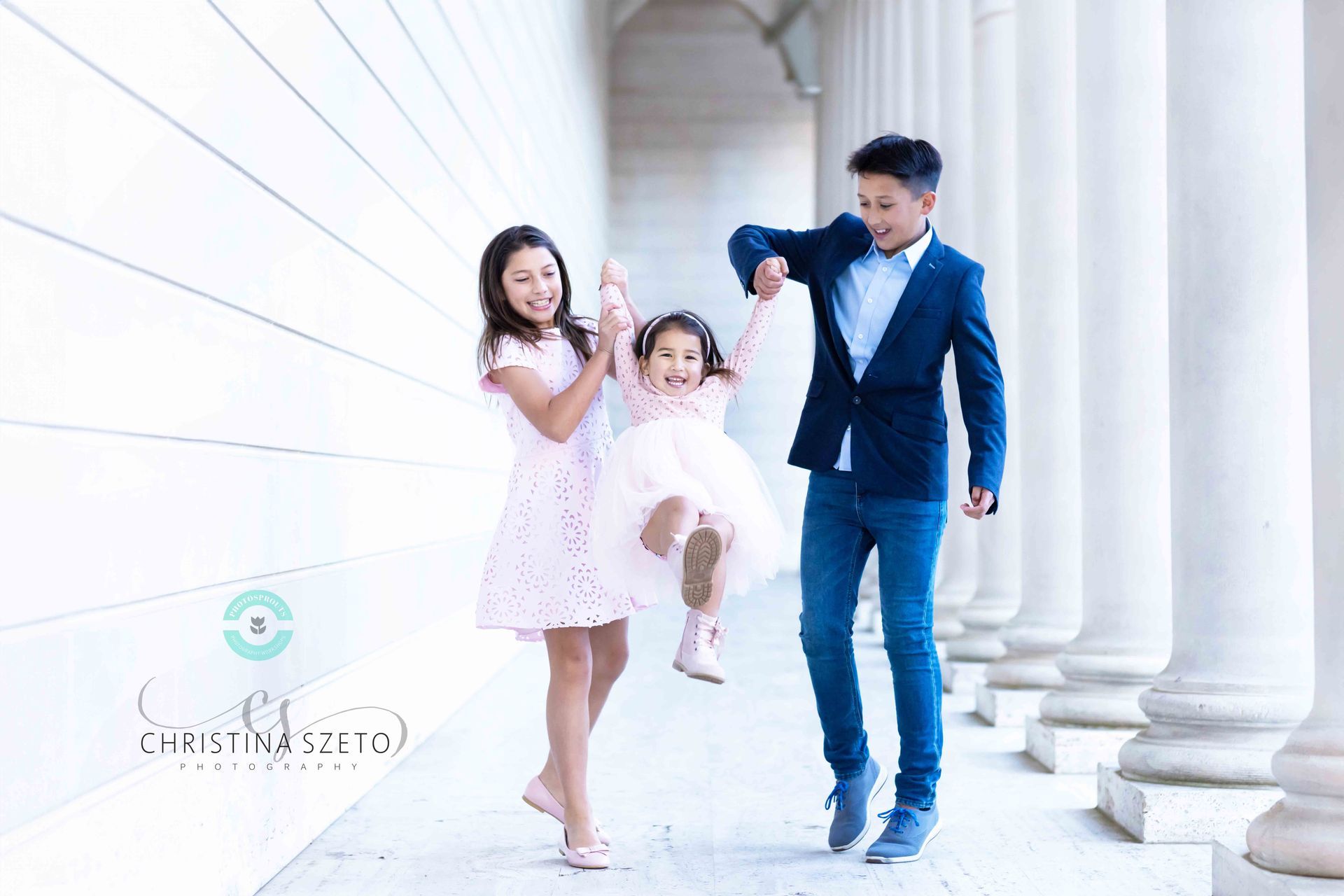
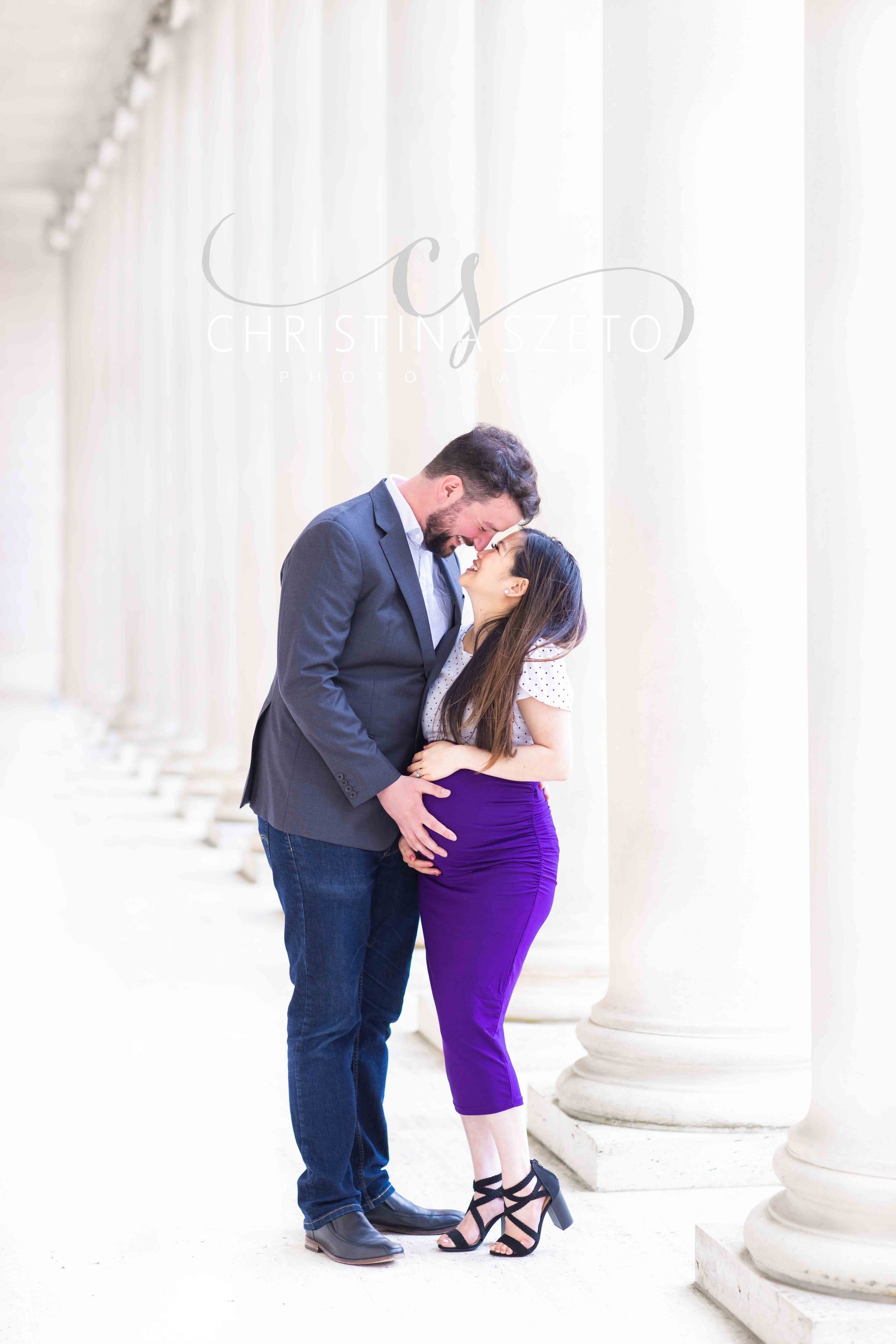
Tip #5
Choose the right equipment
Choosing the right lens can make a huge difference in the quality of your family portraits.
In most scenarios, I will recommend using a lens with a focal length of at least 70mm as it reduces distortion, offers a shallower depth of field, and creates a nice compression that blocks the distractions in the background.
Avoid using wide-angle lenses for portraits unless there are meaningful leading lines and the subject is standing away from the camera. A wide angle lens can distort facial features and don’t provide the a flattering look like longer lenses. If you really have to use a wide angle lens, limit to a 35mm one.
If you’re photographing a larger group or want to incorporate more of the surroundings, it’s better to step back rather than switch to a wide lens. My personal favorite is the Canon RF 85mm F1.2, which creates beautiful bokeh and gives each image a professional, polished feel. The camera that I use for photographing family sessions is the Canon full frame mirrorless camera, the EOS R5.

Focal length: 85mm
Canon EOS R5 + RF 85mm F1.2

Focal length: 35mm
Canon EOS R5 + RF 15-35mm F2.8 (35mm edge)
A friendly reminder about the camera
Understanding whether your camera is a full-frame or a crop sensor is essential for achieving the best results in your photography. If you're unsure about your camera type, a quick Google search can provide the information you need.
Using a crop sensor camera, like the Canon R50, introduces a crop factor that affects the effective focal length of your lenses. For Canon cameras, the crop factor is typically 1.6. This means that the field of view is narrower than it would be on a full-frame camera.
For example, if you're using a 50mm lens on a Canon R50, you would multiply that focal length by the crop factor of 1.6. So, the equivalent focal length becomes 80mm (50mm x 1.6 = 80mm). And yes, you got it, 80mm creates a nice compression and won't result in facial distortion.
Further, if you are using a full frame camera with a lens that is made for crop-sensor camera, you will still see the crop even though they might be physically compatible.
This is important to keep in mind when composing your shots, as the crop factor can significantly influence your framing and perspective.
Being aware of this distinction will help you select the right camera & lenses combinations for your desired outcome, ensuring you capture stunning family photos that will be treasured for years to come.
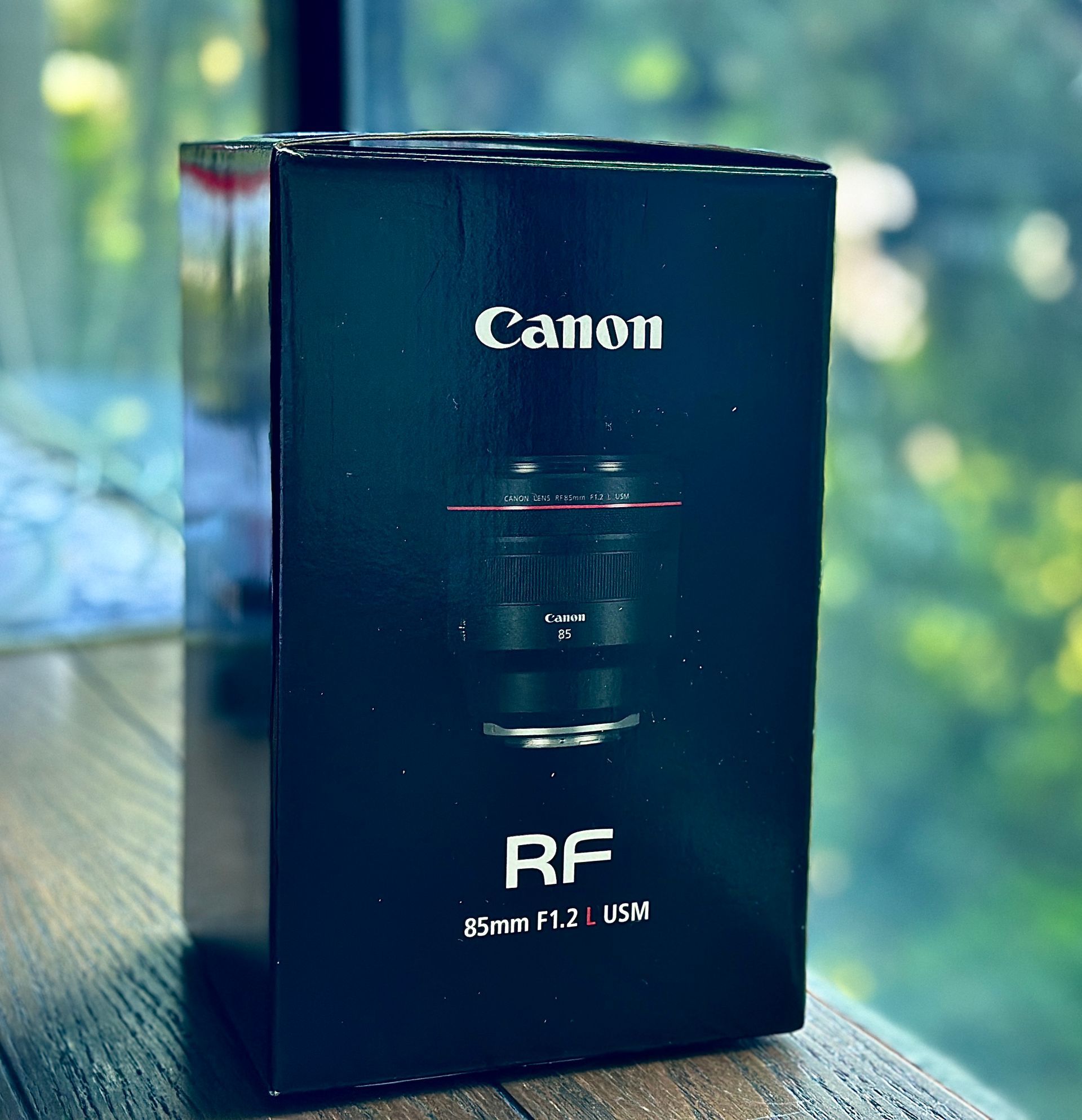
My go-to portrait lens: Canon RF 85mm F1.2
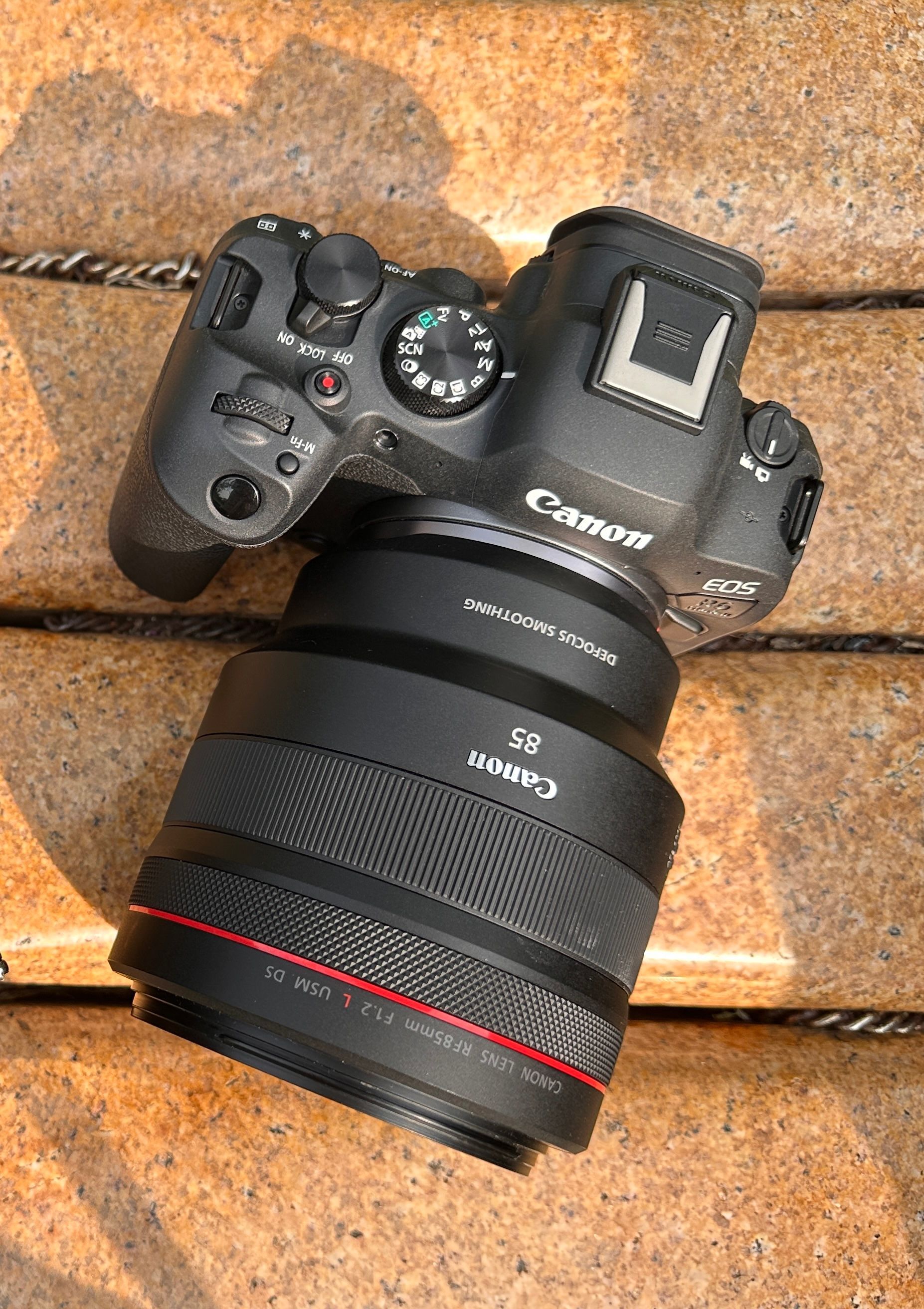
More resources
To book a holiday card family photo session with Christina, please click here.
To enroll in The Professional Family Photography Academy, please click here.






